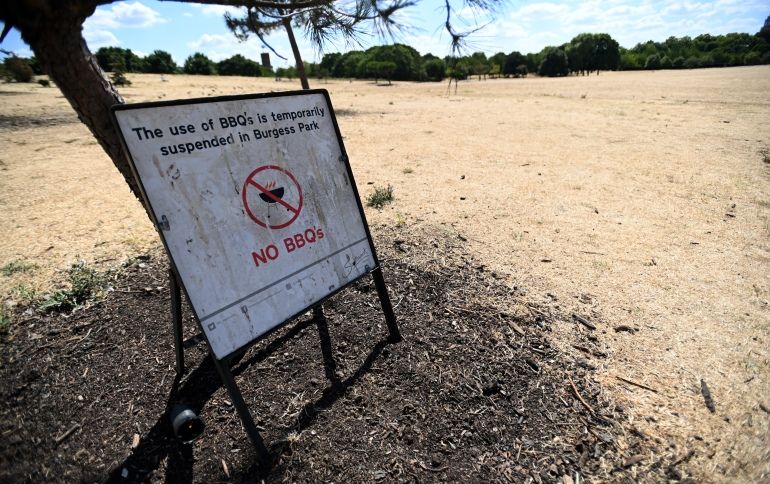The second-most severe alert after red means that people vulnerable to extreme heat could face adverse health effects.
The United Kingdom’s weather service has issued an amber “extreme heat” warning for parts of England and Wales, with no respite in sight from hot dry conditions that have sparked fires, broken temperature records and strained the nation’s infrastructure.
The amber warning – the second-most severe after red – will be in place from Thursday through to the end of Sunday and means that people vulnerable to extreme heat could face adverse health effects, the UK Met Office said on Tuesday.
Temperatures are expected to peak at 35 degrees Celsius (95 Fahrenheit) on Friday and may hit 36C (97F) in some places on Saturday.
The warning follows the driest July for England since 1935, when temperatures rose above 40C (104F) for the first time, turning a renewed spotlight on the impacts of climate change.
Other European nations have also faced a scorching heatwave in recent weeks, with temperatures often exceeding 40C (104F).
 A ‘no barbeques’ sign at a park in London
A ‘no barbeques’ sign at a park in London
The UK, which is less used to such high temperatures, has struggled to cope.
July’s heatwave caused power outages, damaged airport runways, buckled rail tracks and ignited dozens of blazes in London, where the fire brigade faced its busiest week since World War II.
Britain’s largest water company, Thames Water, which serves 15 million customers across London and southeast England, said on Tuesday it was planning to announce temporary usage restrictions in the coming weeks due to the hot temperatures this week and long-term forecasts of dry weather.
Several other water companies have already imposed restrictions and supermarkets have limited sales of disposable BBQs that firefighters warn can set light to tinder-dry grass. Ambulance services have received hundreds of calls from patients facing breathing difficulties, dizziness and fainting.
The amber warning, which follows Britain’s first-ever red “extreme heat” warning in July, covers much of the southern half of England and parts of eastern Wales.
Scientists have said the July heatwave was made at least 10 times more likely because of climate change.















